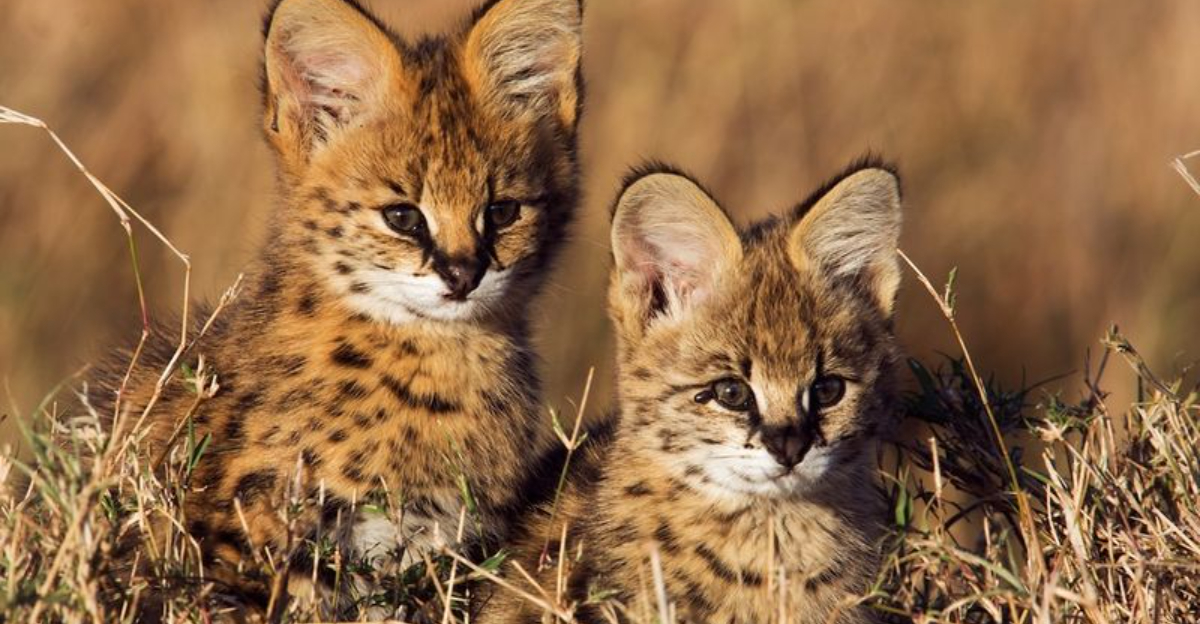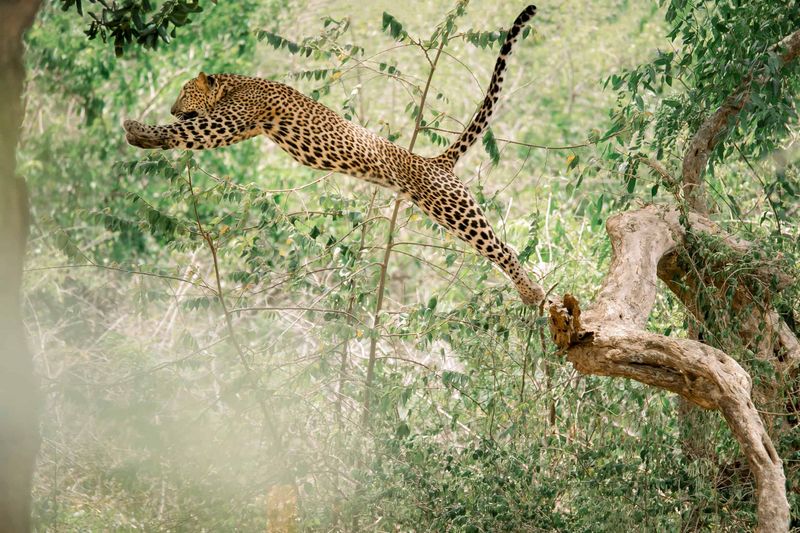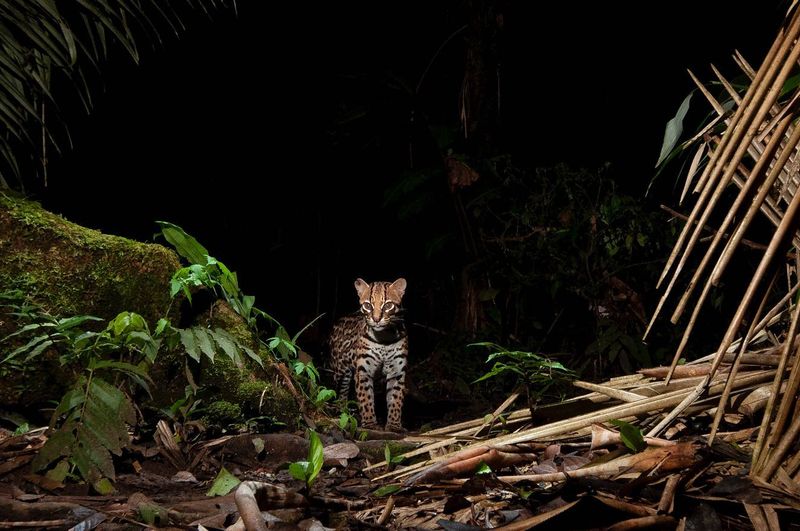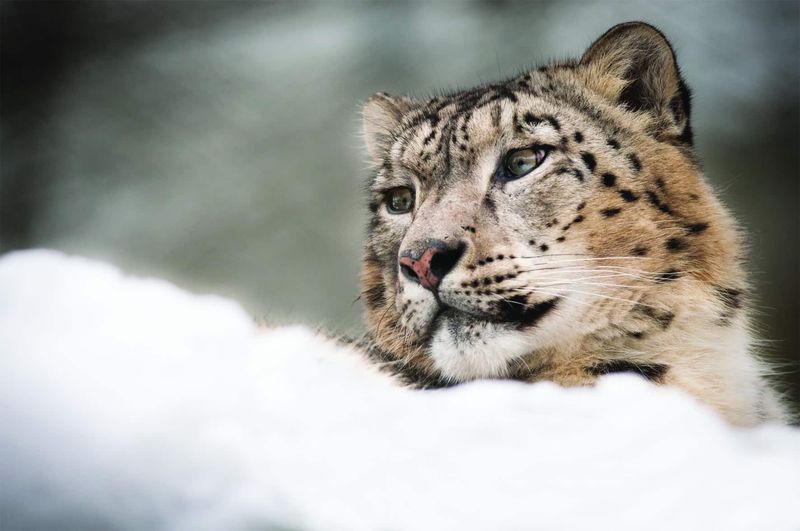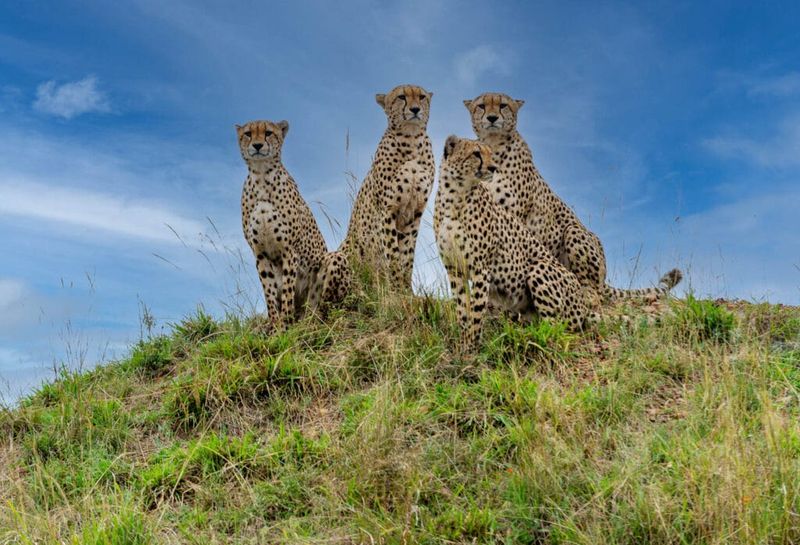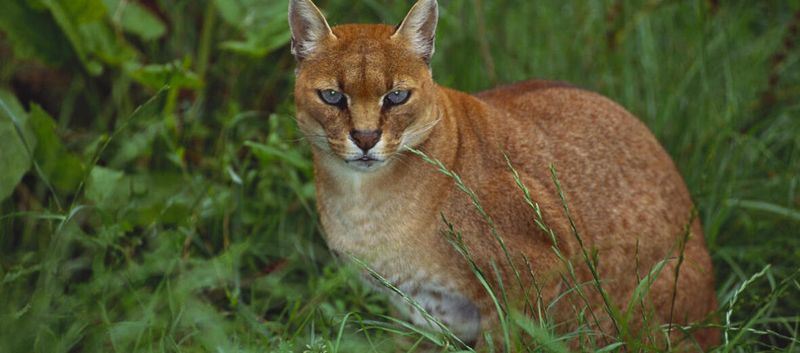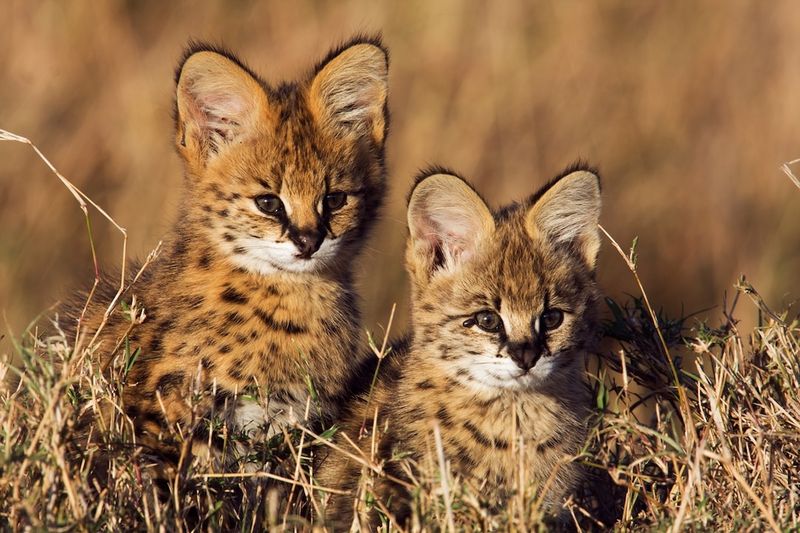📖 Table of Content:
- 1. Leopard (Panthera pardus)
- 2. Cougar/Mountain Lion (Puma concolor)
- 3. Ocelot (Leopardus pardalis)
- 4. Snow Leopard (Panthera uncia)
- 1. Lion (Panthera leo)
- 2. Cheetah (Acinonyx jubatus) – Male Coalitions
- 3. African Golden Cat (Caracal aurata) – Occasional Sharing
- 4. Eurasian Lynx (Lynx lynx) – Mothers with Cubs
- 5. Tiger (Panthera tigris) – Family Bonds
- 6. Serval (Leptailurus serval) – Mothers and Offspring
In the vast tapestry of the animal kingdom, wild cats stand out for their elegance, strength, and fierce independence. While they all share carnivorous diets and hunting instincts, their methods of securing and consuming prey vary widely. Some rely on stealth and solitude, while others engage in group dynamics that reveal surprising cooperation among these typically solitary creatures.
For many wild cats, the act of hunting is a deeply personal endeavor, honed by evolution to maximize stealth, timing, and efficiency. These solo hunters often operate under the cover of night or dense foliage, relying on acute senses and agile bodies to outwit their prey. Isolation gives them a strategic advantage, reducing the risk of alerting prey and eliminating the need to compete with others for the spoils.
Conversely, other feline species display unexpected social tendencies, especially when it comes to feeding. Whether it’s the cooperative pride structure of lions or the familial units of tigers and cheetahs, these species show that strength in numbers can also be a successful survival tactic. Their interactions reveal intricate social rules, including food sharing and coordinated hunting strategies. Through their diverse approaches to feeding, wild cats reflect a broader spectrum of behavior than one might expect from apex predators. This diversity underscores how environmental pressures and social evolution shape even the fiercest creatures of the wild.
1. Leopard (Panthera pardus)
Silent shadows in the jungle, leopards are expert solo hunters that rely heavily on stealth. Unlike lions, they rarely make noise during the hunt and prefer dense cover to stalk their prey undetected. Each individual leopard has a home range where it hunts, often patrolling and marking it to keep rivals at bay. Upon a successful kill, leopards frequently drag their prey into trees, not just to avoid scavengers like hyenas, but also to eat in peace. Their powerful limbs and muscular bodies are perfectly adapted for this task. They usually hunt at dawn or dusk, capitalizing on low light to remain unseen. This solitary approach ensures they maximize the reward from each hunt without competition.
2. Cougar/Mountain Lion (Puma concolor)
Towering ranges and dense forests across the Americas serve as the hunting grounds for the elusive cougar. Known for its adaptability, this big cat is found in a wide variety of ecosystems, from mountains to deserts. It leads a solitary life and avoids human contact whenever possible, often moving silently and unseen. When hunting, cougars rely on ambush tactics, stalking prey quietly before launching a powerful leap to deliver a fatal bite. They typically target deer but will also eat smaller mammals when necessary. After a kill, a cougar may cover the carcass with leaves or snow to return to it later. This secretive behavior helps avoid scavengers and allows it to feed in safety.
3. Ocelot (Leopardus pardalis)
Emerging from the rainforest understory at night, the ocelot is a master of stealth and patience. It hunts smaller prey like rodents, birds, and reptiles, navigating thick vegetation with silent precision. Preferring to be alone, the ocelot marks its territory with scent to ward off competitors. Unlike larger cats, it doesn’t need massive kills to sustain itself, which suits its solitary nature. The species is highly adaptable and often switches prey depending on seasonal availability. Resting during the day and hunting after sunset, it embodies the rhythm of a true nocturnal predator. Ocelots typically eat their catch immediately, rarely needing to hide or share it.
4. Snow Leopard (Panthera uncia)
High above sea level in the cold, craggy Himalayas, the snow leopard stalks its prey with ghost-like precision. Their solitary existence is a necessity in the sparse alpine terrain where food is scarce. Known for their tremendous leaping ability, they can pounce from great distances, often attacking from above. Blue sheep and ibex form the bulk of their diet, although they also target smaller mammals. Snow leopards cover vast territories, sometimes more than 1,000 square kilometers, to find sufficient prey. After a successful hunt, they may remain near the kill site for several days, returning to feed until it’s gone. These adaptations highlight how isolation and resilience define their feeding style.
1. Lion (Panthera leo)
Roaring across the savannas of Africa, lions are the undisputed socialites of the wild cat world. Living in structured groups called prides, they coordinate hunts that require strategy and cooperation. Lionesses typically handle the hunting, working together to encircle and ambush large prey such as wildebeests or zebras. Once a kill is made, feeding follows a social hierarchy, with males often eating first, followed by females and cubs. This communal lifestyle allows them to take down much larger animals than a lone hunter ever could. Cubs learn by observing adults and may receive small shares to begin their training. Group dynamics provide both protection and sustenance, shaping lions into communal carnivores.
2. Cheetah (Acinonyx jubatus) – Male Coalitions
Zooming across open plains, cheetahs are known for speed rather than strength, but some, especially males, form small groups called coalitions. These coalitions, often made up of brothers, increase survival odds by securing and defending hunting territories. Unlike female cheetahs who are solitary, males in coalitions may hunt and eat together, occasionally bringing down larger prey through teamwork. Their feeding times are often hurried due to threats from stronger predators like lions or hyenas. These groupings offer a unique social wrinkle in an otherwise solitary species. Even while sharing, a sense of competition exists, and dominant individuals often claim first access to the kill. Still, this cooperative behavior enhances their hunting efficiency and defense.
3. African Golden Cat (Caracal aurata) – Occasional Sharing
Dwelling in the dense rainforests of Central Africa, the African golden cat is one of the most elusive wild felines. While typically solitary, there is rare documentation of cooperative behavior between related individuals, particularly mother-offspring pairs. These moments, though limited, suggest an evolutionary overlap between solitary and social feeding behaviors. The cat hunts small to medium-sized animals and is known for its secretive, cautious movements. Its diet varies from birds and rodents to monkeys and small antelope. When a mother is rearing young, she may share kills or teach hunting through observation. This occasional cooperation provides a glimpse into early social development in solitary cats.
4. Eurasian Lynx (Lynx lynx) – Mothers with Cubs
Patrolling Europe’s forests and mountainous zones, the Eurasian lynx hunts alone but displays strong maternal behavior during the cub-rearing period. Mothers teach their young by example, including them in hunts and allowing them to feed on fresh kills. These formative months are critical for survival, as cubs learn how to stalk and ambush prey such as hares and deer. Though adult lynxes are solitary, these maternal teaching moments are vital to the species’ lifecycle. The lynx often caches food to return later, a trait passed on through this early training. Cubs are allowed to feed first at times, fostering independence. This unique bond shapes the next generation of hunters.
5. Tiger (Panthera tigris) – Family Bonds
Ruling the forests of Asia with silent authority, tigers are emblematic of solitary strength. Despite this, mother tigers form lasting bonds with their cubs, often feeding and protecting them for up to two years. During this time, the tigress will bring down prey and allow the cubs to eat their fill, a generous act in a world where every meal is earned. Cubs accompany their mother on hunts as they mature, learning tactics and terrain. While adult males and females typically avoid each other, family units present a rare glimpse into tiger social structure. These maternal sacrifices highlight the softer edge of an otherwise solitary existence. Through this nurturing, tigers pass on vital survival skills.
6. Serval (Leptailurus serval) – Mothers and Offspring
Gracefully navigating African grasslands, the serval is a small wild cat with large ears and a high success rate in hunting. Solitary by nature, it is particularly active at dawn and dusk, hunting rodents, birds, and frogs with impressive pouncing skill. During the early months of motherhood, however, the serval’s habits change. Mothers feed and care for their kittens, even regurgitating food or bringing live prey for practice. These actions help kittens develop the reflexes needed for adulthood. The young servals learn quickly, watching every move before attempting their own hunts. Though the mother resumes solitude after weaning, the early feeding rituals are key to their development.
